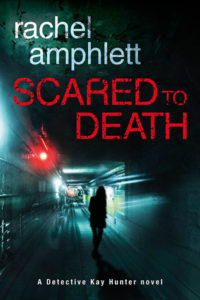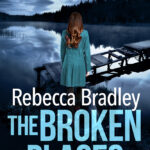 Welcome back to another Revisions Process post. I’m pleased to welcome crime writer, Rachel Amphlett back to the blog.
Welcome back to another Revisions Process post. I’m pleased to welcome crime writer, Rachel Amphlett back to the blog.
Before moving to Australia in 2005 Rachel lived in the UK and helped run a pub, played guitar in a band, worked in TV and film as an extra, dabbled in radio as a presenter and freelance producer for the BBC and worked in publishing as a sub-editor and editorial assistant – not necessarily in that order!
She writes thriller and suspense novels and in her spare time enjoys horse-riding, skiing, going to the cinema and reading and writing.
You can find Rachel’s First Draft Q&A Here.
Your first draft has been completed, what state is it generally in?
I’d say about 80% complete. I’ll have gaps marked ‘XXX’ where I have to go back and fill in characters’ names, or I’ll have some text in square brackets and highlighted in bold where I need to check my facts. I might have the odd scene here or there that is half-finished, but nothing to worry about.
What is the first thing do before you start to revise?
Check facts with my experts – that way, I can start that first revision armed to the teeth with the knowledge I need.
How do you assess the damage that needs working on?
This is the part I love – I use coloured sticky flags to identify different types of issues. I’ll have one colour for a missing or incomplete scene, another for a timeline check, etc. That way, I can sift through the manuscript (I always work from a hard copy once the first draft is complete) and work on whatever part takes my fancy.
Do you allow anyone to read that very first draft before revisions or can you assess it objectively yourself?
No, no-one else will get to see this until it’s had at least one or two run-throughs by me as it’s still pretty raw.
What do you initially focus on, when approaching the completed first draft of the manuscript?
Filling in the gaps, and getting the draft fully complete before I start to re-read it in full.
Do you have any rituals, writing or real-world, when revising a manuscript?
Not really. Once I hit that 80% completion I’ll put it away for maybe a week but I don’t hang around. I find that advice about putting it away for six weeks doesn’t work for me. If I did that, it’d mess with my productivity. No sooner have I finished the first draft of one book, I’m outlining the next. Then I’ll go back and begin the revisions of that first draft.
In what format do you revise, paper or computer?
Computer and paper. I do like revising in long-hand though, and the great thing is, I don’t have to type it up afterwards because I can dictate it using Dragon. Shorter bits and pieces I’ll type straight in to the next iteration, but there’s something about sitting at the table with a notebook and the manuscript spread out around me that keeps the creative juices flowing.
How messy is the revision process – can you go in and repair areas or does the whole manuscript get decimated?
It’s usually repairing areas. Sometimes there are chapters that won’t get touched until the professional editor and proofreader have each been through them. It’s a magical feeling when a scene works well right from the start.
Is revision an overhaul of the story or is it minor editing?
Somewhere in the middle for me, and probably because I outline so much to start off with.
What’s the biggest change you’ve made to a story during this process?
Character names, usually. Sometimes one just won’t feel “right” and so I’ll change it throughout.
When first drafting, many writers keep track of progress by counting words in a day. How do you make sure you’re progressing as you’re revising?
The number of coloured tags sticking out the side of the manuscript that disappear! I remove them and stick them around my computer screen so I can see how I’m doing.
Do you prefer to write the first draft or do you prefer the revision process?
I can honestly say I really enjoy both. I love the freedom of writing the first draft, but the revision process helps me discover more about the characters, and that’s usually an eye-opener.
What do you drink while you’re working?
Coffee in the morning, tea throughout the day, and a cold beer after 5pm – especially in the summer!
How long does this process take and what shape is the book now in?
About 2-3 weeks, and by then it’s ready to go to beta readers. I don’t hang about 🙂
You can find Rachel on Facebook | Twitter | Mailing list
Scared To Death
 A serial killer murdering for kicks.
A serial killer murdering for kicks.
A detective seeking revenge.
When the body of a snatched schoolgirl is found in an abandoned biosciences building, the case is first treated as a kidnapping gone wrong.
But Detective Kay Hunter isn’t convinced, especially when a man is found dead with the ransom money still in his possession.
When a second schoolgirl is taken, Kay’s worst fears are realised.
With her career in jeopardy and desperate to conceal a disturbing secret, Kay’s hunt for the killer becomes a race against time before he claims another life.
For the killer, the game has only just begun…
Scared to Death is a gripping fast paced crime thriller from author Rachel Amphlett, in a new series introducing Kay Hunter – a detective with a hidden past and an uncertain future…
You can find the rest of the Revisions series Here and the First Draft series Here.
If you want to take part then please do let me know.



I really like the idea of using the revision process to check facts and make sure of accuracy. I think that sort of research is so important! And I’m the same way: I always step away from a manuscript for a bit before I revise. Wishing you much success!